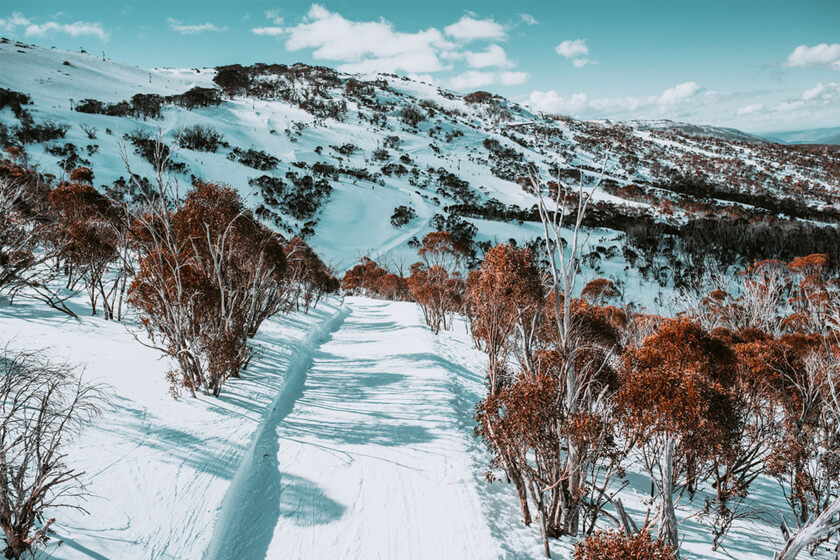Find Out Why Snow In Australia is a Must-See for Travelers
Find Out Why Snow In Australia is a Must-See for Travelers
Blog Article
Comprehending the Value of Snow in Australia for Farming and Tourist
While Australia is usually linked with sun-kissed beaches and dry outback, it also flaunts a wide range of snowy towering areas. As we investigate this surprising crossway, the possible effect of shifting environment patterns on Australia's snowfall and its succeeding impacts end up being an engaging emphasis.

The Unexpected Snowfall: Australia's Alpine Regions
When winter season cloaks the world, Australia's Towering regions don a white mantle of snow, a spectacle that seems almost paradoxical in this dominantly sun-baked land. Unlike the stereotyped picture of Australia as a land of beaches and deserts, these regions supply a unexpected and stunning contrast. The Australian Alps, extending throughout New South Wales, Victoria, and the Australian Resources Region, obtain more snowfall than Switzerland. This unforeseen winter heaven uses a special ecological community, supplying an environment for numerous native species and a snowy play ground for winter sporting activities lovers. The annual snowfall, although not as bountiful as in some countries, is a crucial element of Australia's climate variety and plays a considerable function in the country's agricultural techniques and tourism industry.
Winter months's Bounty: Snow's Payment to Australia's Water Resources
Despite its rarity in the wider landscape of Australia, snow in the Alpine regions plays a vital duty in the nation's water resources. This is particularly crucial for Australia, a continent often pestered by droughts. Without the bounty of winter months snow, Australia's water resources would be considerably strained, affecting both the population and the atmosphere.
White Covering, Environment-friendly Fields: The Influence of Snow on Australian Farming
Although much less noticeable, the impact of snow on Australian farming is significant. Snowfall in the high country works as a natural kind of watering, progressively melting and giving a constant water system to lower-lying farmland. This water-rich setting cultivates the development of robust crops, adding to the nation's farming efficiency. Additionally, snowfall improves dirt health by introducing dampness and capturing nutrients, which are slowly launched as the snow thaws. This process enriches the dirt, cultivating the development of healthier, more resistant plants. In addition, snow cover works as a safety blanket, insulating the ground against severe winter months temperature levels that could or else damage crops. Thus, the duty of snow in Australian farming is both essential and diverse.

Money: Snow Tourism and Its Economic Relevance in Australia
While the worth of her latest blog snow to Australian farming is often underestimated, its payment to the country's tourism industry is undoubtedly considerable. The snow-laden tops of Australia's alpine areas their explanation draw in a flurry of travelers every wintertime, contributing millions to the national economic situation. These site visitors engage in a range of snow-based activities, from skiing and snowboarding to snowshoeing and sledging. The thriving snow tourist market has brought about the creation of countless tasks, from ski instructors to resort personnel, bolstering neighborhood economies at the same time. The profits generated from snow tourist helps fund different infrastructure jobs and necessary services in these areas. Thus, the economic value of snow tourist in Australia expands far past the inclines.
Future Forecast: Environment Adjustment and Its Potential Results on Australia's Snowfall
As the world grapples with the reality of climate modification, so as well should Australia consider its potential effects on the nation's snowfall. Such modifications endanger the feasibility of Australia's ski industry, which contributes significantly to the neighborhood economic climate. The possible impacts of these changes underscore the seriousness of climate change reduction initiatives, both in Australia and worldwide.
Conclusion
In conclusion, snow is a critical element of Australia's agricultural and tourist fields. It not just nourishes the nation's agricultural landscape however also fuels its winter months tourist sector. However, the looming hazard of environment modification raises concerns concerning the future of Australia's snowfall patterns, potentially disrupting these substantial private sectors. Understanding and dealing with these obstacles is vital for the sustainability of Australia's economy and ecological community.

When wintertime cloaks the world, Australia's Towering areas put on a white mantle of snow, a phenomenon that seems virtually paradoxical in this dominantly sun-baked land.Despite its rarity in the wider landscape of Australia, snow in the Towering regions plays a vital role in the country's water resources. Without the bounty of wintertime snow, Australia's water sources would be substantially stressed, affecting both the setting and the populace.
Thus, the economic relevance of snow tourism in Australia extends far beyond the slopes.
In see this final thought, snow is a crucial element of Australia's agricultural and tourism markets. Snow In Australia.
Report this page